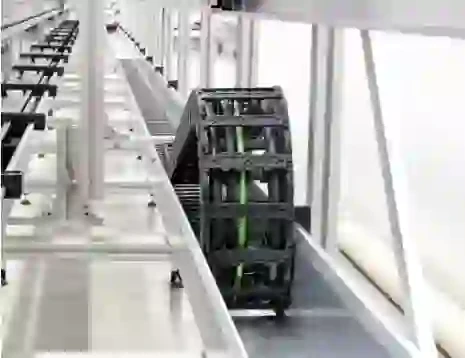Cable Management Solutions for Efficient Carrier Tray Systems and Electrical Installation
Understanding Cable Carrier Trays An Essential Component for Modern Infrastructure
In the ever-evolving landscape of modern infrastructure, the management of electrical and data cables has become increasingly crucial. Cable carrier trays, often referred to as cable trays, serve as a backbone for organizing, supporting, and protecting various types of cables used in commercial, industrial, and residential applications. This article delves into the importance, types, benefits, and considerations associated with cable carrier trays.
What are Cable Carrier Trays?
Cable carrier trays are supportive structures made from metal, plastic, or fiberglass that hold and secure various types of cables. They come in different shapes and sizes to accommodate the vast array of cables used in electrical and data transmission. These trays are typically mounted along walls, ceilings, or floors, providing an efficient pathway for cable routing.
Types of Cable Carrier Trays
1. Ladder Trays These are designed like a runged ladder, providing ample space for cables to be laid flat. Ladder trays are excellent for heavy-duty applications, offering support without trapping heat, which helps in maintaining cable integrity.
2. Solid Bottom Trays Known for their safety features, solid bottom trays provide a full surface for cables, reducing the risk of damage. They are ideal for areas prone to dust and moisture, as they protect cables from environmental factors.
3. Perforated Trays Featuring small holes or slots, perforated trays allow for ventilation while ensuring that cables remain secure. This design suits environments where heat dissipation is vital.
4. Channel Trays Channel trays have the shape of a channel which allows for easy cable management in confined spaces. Their compact structure is beneficial for applications where space is limited.
Benefits of Using Cable Carrier Trays
1. Organization With an effective cable management system, agencies can minimize clutter and confusion often associated with a tangle of cables, which reduces the risk of accidents and promotes workplace efficiency.
2. Protection Cable trays safeguard cables from physical damage, environmental effects, and hazards, contributing to the longevity of your cabling infrastructure.
cable carrier tray

3. Ease of Maintenance Implementing cable trays simplifies the maintenance process. With cables organized and accessible, troubleshooting and repairs become less time-consuming and less costly.
4. Flexibility Cable trays offer flexibility in cable installation and relocation. As systems expand or change, trays can easily adapt to new configurations, catering to growing or modified electrical needs.
5. Cost-effectiveness Investing in quality cable carrier trays ultimately leads to cost savings. By preventing damage to cables and promoting safer work environments, organizations can avoid costly repairs and downtime.
Considerations When Choosing Cable Carrier Trays
When selecting the appropriate cable carrier tray for a specific application, several factors should be taken into account
- Weight Capacity Determine the weight of the cables that will be placed in the tray and select a tray that can safely support this weight.
- Material Compatibility Ensure that the material of the tray is suitable for the expected environmental conditions, such as humidity, temperature fluctuations, or exposure to chemicals.
- Regulatory Compliance Familiarize yourself with local codes and regulations regarding cable management, as some industries may have specific requirements.
- Installation Requirements Some trays necessitate additional hardware for installation. Assess the installation process and whether you need professional assistance.
Conclusion
In summary, cable carrier trays are indispensable for efficient cable management across various industries. By understanding their types, benefits, and relevant considerations, organizations can optimize their cable systems for safety, functionality, and longevity. Investing in proper cable management not only enhances workflow but also contributes significantly to a safe and organized environment. As technology advances, the importance of reliable cable carrier systems will only grow, making them an essential component of modern infrastructure.








